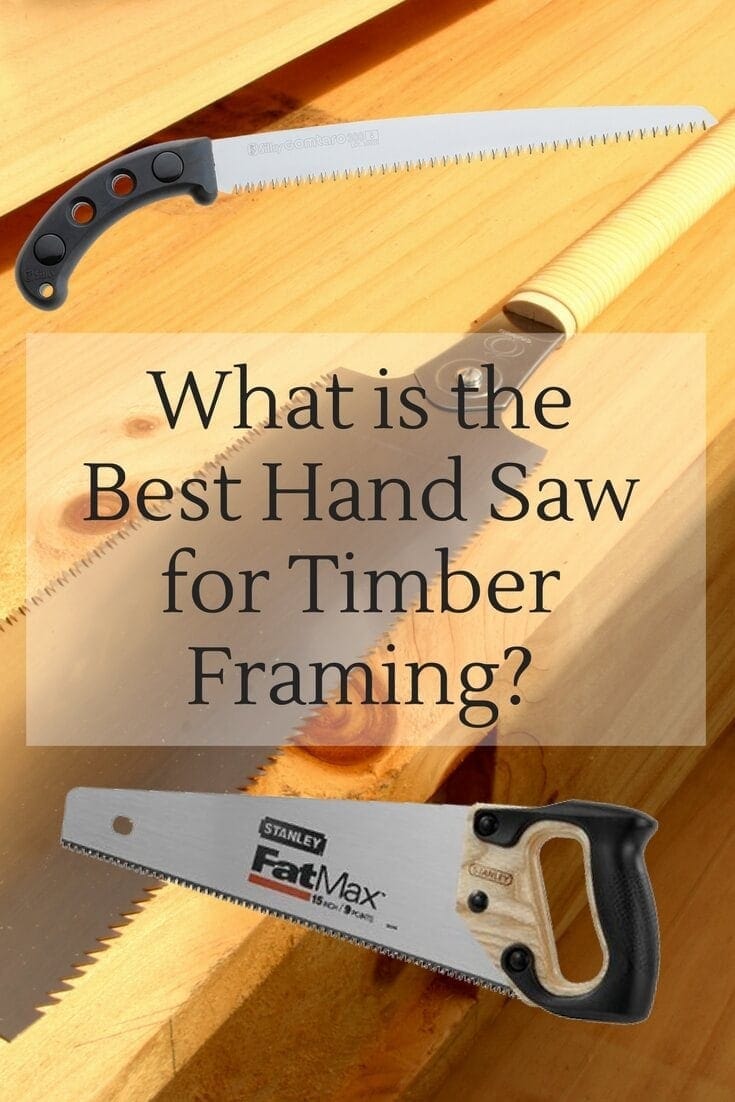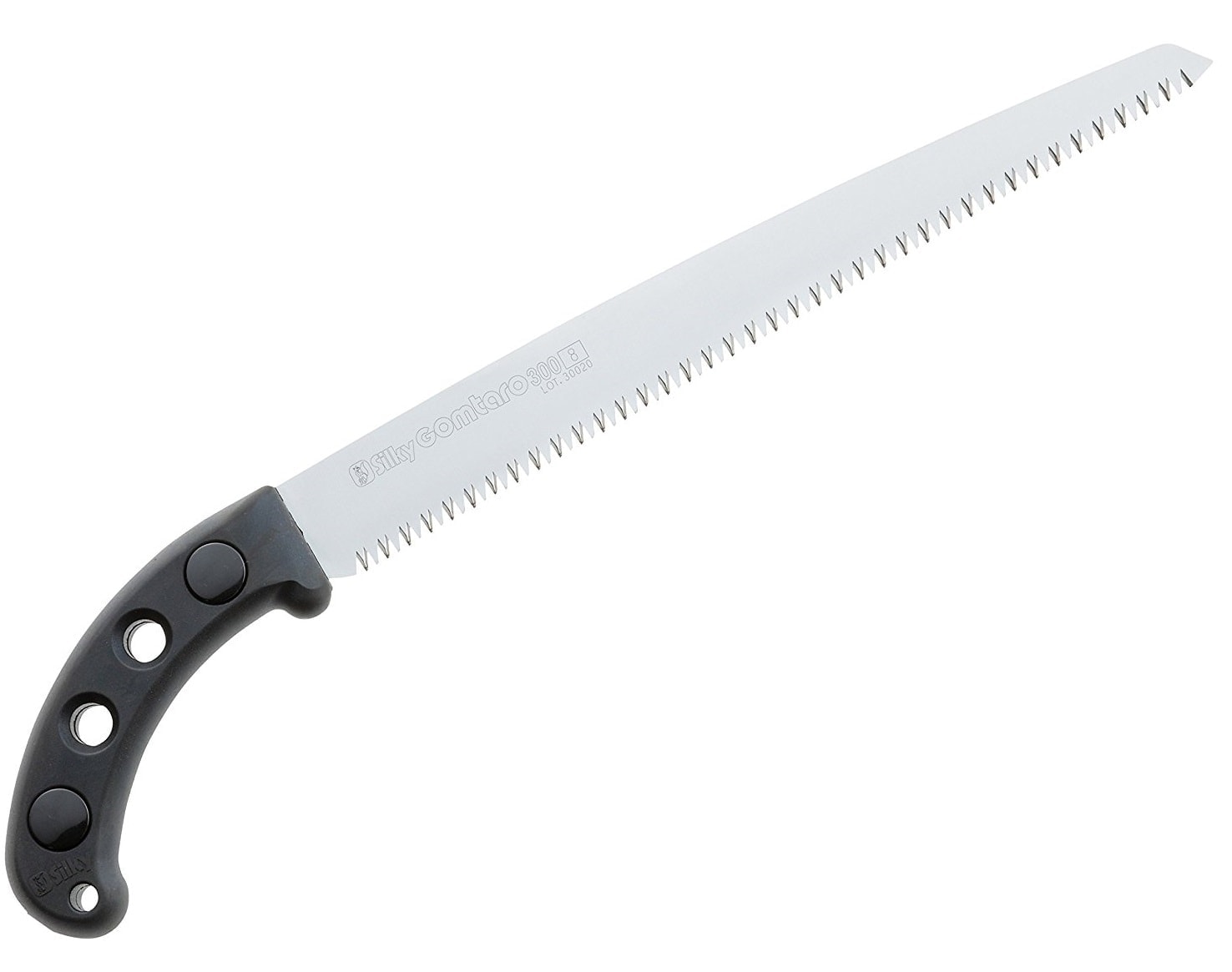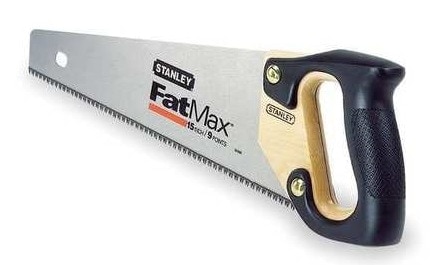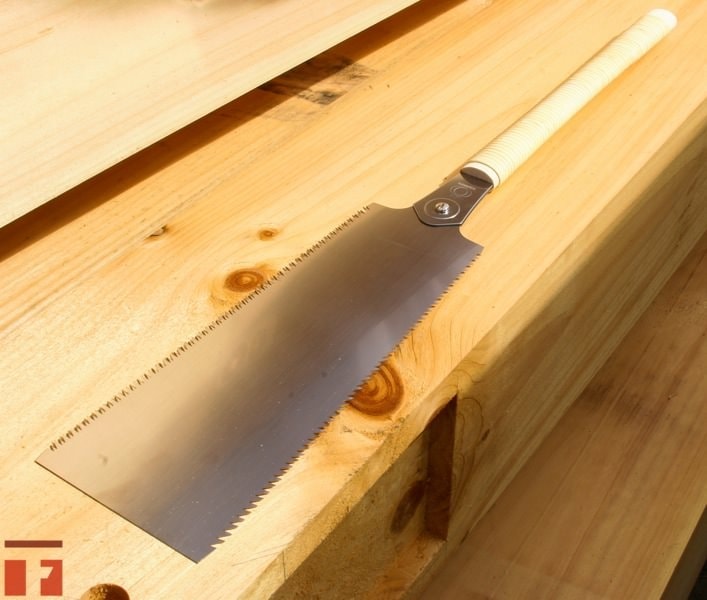
When it comes to deciding on a hand saw for timber framing, keep your thinking simple. Hand saws are centuries-old tools and there’s no need to reinvent the wheel, so to speak. Just ask yourself three basic questions. Does it cut straight? Is it functional for your use? And, is it durable? Here are three somewhat unique hand saws you may want to give a long look.

| |||
Blade Length | 12" | 15" | 11 4/5" |
TPI (Teeth per Inch) | 9/6 | 9 | 7 |
Sawing Action | Pull | Push | Pull |
Gyokucho Noko Giri 12" Double Edge (Ryoba) Razor Saw
Ernest Hemingway outlined a philosophy in his novel The Sun Also Rises that separates the world into two groups of bullfight lovers, the crowd and the aficionados. The crowd enjoys the sport, spectacle and may even try their hand on an amateur basis. But the aficionados truly know the art and passion of bullfighting. In terms of timber framing, this Japanese-made Gyokucho Noko Giri is for the passionate professional and reinvented using a hand saw for me.
In Japanese, “Ryoba” basically means two sides and “Noko Giri” hand saw. This timber framing hand saw has teeth on both sides of its 0.21-inch thick blade. One side provides rip and the other crosscut teeth. The general rule with these Japanese saws is that the bigger the saw the wider the teeth spacing, which is better for timber framing. On this 12-inch, the crosscut edge enjoys 9 TPI (teeth per inch) and the rip 6 TPI. Unlike many push saws, you can get both hands on the long, straight handle. The cutting action happens on the draw and this model’s large teeth allow you to make quick work of a 8x timber. The ability to replace dulling blades make it an enviable pro tool that won’t slow you down. Saw owners give the Noko Giri high praise for its effectiveness and dual use. Those new to the Japanese style will need a little practice to work in “reverse” from European-American push saws, but should get the hang of it quickly.
Gyokucho has a renowned reputation for making the finest Japanese-style hands saws and this 12-inch won’t tarnish it one bit. Investing in the quality of a Gyokucho Noko Giri makes good sense for professionals, particularly if you do post and beam work.
Stanley 20-045 15-Inch Fat Max Hand Saw
This Stanley hand saw employs SharpTooth technology for 50-percent faster cuts and its rugged build sports 9 TPI over the 15inch blade. The induction-hardened teeth remain sharp 5 times longer than standard hand saws. Its thick, ergonomically fashioned handle adds comfort and promotes a consistent grip during extended use. Fat Max won’t shy away from any tough or damp timber that requires a straight cut. The blades on this durable saw run 15 percent thicker than conventional saws, which reduces flexing and improves precision.
Fat Max owners give the tool terrific marks. From aggressively cutting 8x timbers to cleaning up tree falls, users say this stout saw handles any job you throw at it. The minor negative about Fat Max is that it makes rough, rather than fine cutslike the In its defense, the saw was designed mainly for rough cuts not finish work.
This hand saw does everything timber framer require. It makes straight cuts, has a functional design and enjoys excellent durability. Stanley has been around for more than 150 years and this 15-inch hand saw will only buoy its hand tool reputation.
Silky 102-30 GOMTARO 300mm Straight-blade Lightweight Saw with Scabbard

This Silky can double as a timber saw and landscaping tool. It features a coarse 7 TPI, 11 4/5-inch, full-tang blade and weighs in at a lightweight .6 pounds. The handy scabbard attaches to your tool belt and features a clip for quick removal. This makes it a good, safe tool for on-the-go jobs. It features a pistol-style, rubberized handle and is tremendously effective at fast-cutting small timbers and limbs. One of the excellent aspects of this Silky is that the full-tang blade can be swapped out just by unscrewing two bolts.
Most tool owners give this well-balanced Japanese saw high marks for arborist work but it is great for work in the shop. Outdoors people and survivalists fancy its razor-fast cutting ability and belt-fastening convenience.
For timber frame workers, this Silky may be a nice additional to the tool arsenal for making quick notches and cuts in awkward to reach areas. It also travels up and down ladders well. However, the long blade doesn’t enjoy the firmness for precision work.
Overall, the Silky 102-30 GOMTARO provides a unique level of excellence for working on your timber frame and comes in handy on job sites.
The post What is the Best Hand Saw for Timber Framing? appeared first on Timber Frame HQ.


























